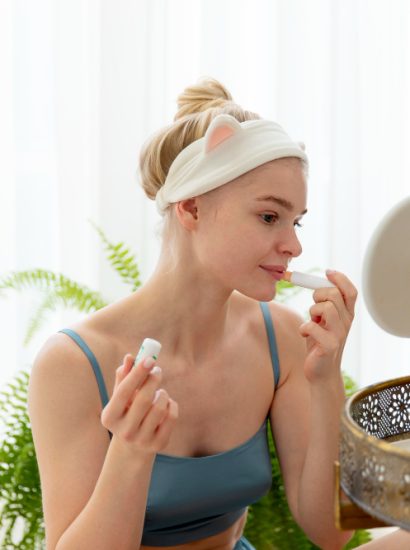Skin irritation, allergies, and insect bites are common issues that affect people of all ages. One product that has stood the test of time in providing relief is Caladryl. Known widely in Spanish-speaking communities, the search phrase “Caladryl para qué sirve” reflects the curiosity and need for information about its uses and benefits.
This guide will explain what Caladryl is, its ingredients, how it works, and the conditions it is commonly used for.
What Is Caladryl?
Caladryl is a topical lotion or cream used to relieve itching, discomfort, and inflammation caused by various skin conditions. It is available over the counter in many countries and is often found in household medicine cabinets for quick relief from insect bites, rashes, and mild allergic reactions.
The product is widely recognized in Latin America, where the question “Caladryl para qué sirve” is commonly searched online, highlighting its relevance in everyday health care.
Active Ingredients in Caladryl
The effectiveness of Caladryl comes from its active ingredients, which often include:
- Calamine: A pink-colored compound known for soothing itching, drying oozing skin, and providing a cooling effect.
- Diphenhydramine Hydrochloride (Antihistamine): Helps reduce itching by blocking histamine, a chemical released during allergic reactions.
Some formulations may vary slightly depending on the country, but most contain these core ingredients that target both irritation and allergy-related symptoms.
Caladryl Para Qué Sirve: Main Uses
So, what is Caladryl used for? Its main applications include:
- Relief from insect bites and stings
- Soothing allergic skin reactions
- Reducing itching from rashes
- Calming irritation from chickenpox or measles spots
- Drying oozing blisters or mild burns
- Comfort for poison ivy, poison oak, or poison sumac exposure
These benefits make it a versatile remedy for many everyday skin issues.
How Caladryl Works on the Skin
Caladryl works through a dual-action formula:
- Calamine creates a protective layer on the skin, drying excess moisture and providing a cooling sensation.
- Diphenhydramine blocks histamine signals, which are responsible for redness, itching, and inflammation.
This combination not only calms the itch but also prevents further irritation caused by scratching.
Benefits of Using Caladryl
The popularity of Caladryl lies in its wide range of benefits:
- Fast-acting relief: Works within minutes of application.
- Multi-purpose: Useful for bites, allergies, and minor burns.
- Soothing texture: Provides a cooling effect that eases discomfort.
- Easily accessible: Sold in pharmacies without a prescription.
- Safe for most people: Can be used by adults and children (with caution).
How to Apply Caladryl Correctly
For best results, follow these steps:
- Clean the area with mild soap and water.
- Dry gently before application.
- Shake the lotion bottle (if using liquid) to mix ingredients.
- Apply a thin layer directly to the affected area.
- Let it dry before covering with clothing.
It can be applied 3 to 4 times daily, depending on the severity of symptoms.
Precautions and Safety Tips
Although Caladryl is generally safe, keep in mind:
- Do not apply to large areas of broken or severely burned skin.
- Avoid eyes, mouth, and mucous membranes.
- Not recommended for children under 2 years unless directed by a doctor.
- Check for allergies to diphenhydramine or calamine before use.
- Consult a doctor if symptoms persist beyond 7 days.
Who Should Use Caladryl?
Caladryl is suitable for:
- Individuals with allergic rashes or skin sensitivity.
- Children with chickenpox spots (with doctor approval).
- Adults experiencing insect bites, hives, or poison ivy exposure.
It is a household staple for families, travelers, and anyone prone to insect bites or seasonal allergies.
Possible Side Effects of Caladryl
Most people tolerate Caladryl well, but mild side effects may include:
- Temporary redness
- Skin dryness
- Mild stinging sensation
Severe reactions are rare but may include swelling, rash worsening, or difficulty breathing, which require immediate medical attention.
Alternatives to Caladryl
If Caladryl is unavailable, similar products may be used:
- Calamine lotion (without antihistamine)
- Hydrocortisone cream (for inflammation)
- Aloe vera gel (for burns and soothing)
- Antihistamine creams with diphenhydramine
Each has specific advantages, but Caladryl’s combination makes it unique for both drying and antihistamine action.
Conclusion
The question “Caladryl para qué sirve” has a simple answer: it serves as a reliable solution for itching, rashes, insect bites, and minor skin irritations. With its blend of calamine and diphenhydramine, it provides quick relief, soothing comfort, and multi-purpose protection for the skin.
As with all medicines, it should be used correctly and responsibly. For most households, Caladryl is a trusted companion for everyday skin discomforts.
FAQs
1. Can Caladryl be used for sunburns?
Yes, it can provide relief for mild sunburns, but aloe vera gel may be more hydrating.
2. Is Caladryl safe for children?
It can be used for children over 2 years, but always consult a pediatrician first.
3. Can I use Caladryl during pregnancy?
It’s generally safe, but pregnant women should consult their doctor before using any topical medication.
4. How long does it take for Caladryl to work?
Relief usually begins within minutes and lasts for several hours.
5. Can Caladryl be applied daily?
Yes, it can be applied 3–4 times a day as needed, but discontinue if irritation worsens.
Also read: How Many Seconds Until 10:47? Real-Time Countdown





